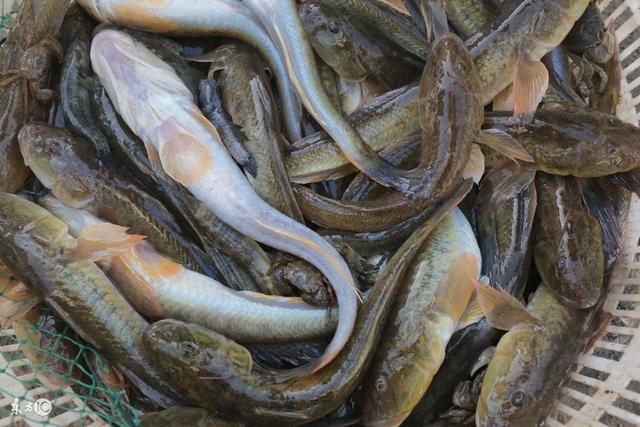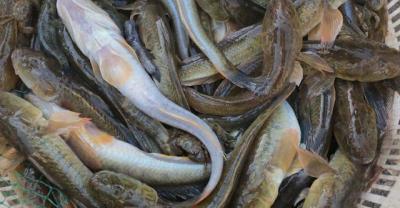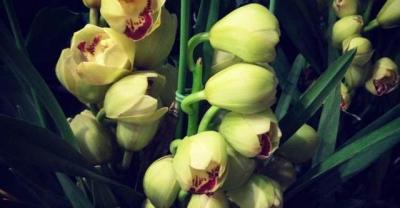Why is it difficult for aquaculture people to get rich? the key is that you have to deal with the occurrence of aquaculture diseases.
In recent years, with the increase of breeding density and the amount of commercial feed, the water environment has been polluted, which has attracted a number one enemy in aquaculture, that is, aquaculture disease. Once the disease is aggravated, it will bring huge economic losses to farmers. Many farmers really take great pains to solve this problem, but the results are often not satisfactory. In view of this situation, the first thing to do is to understand the types and causes of the current aquaculture diseases, and put forward timely and effective control measures to take precautions before the occurrence of the disease and remedy after the occurrence of the disease.
1. Epidemic trend of aquaculture diseases.
At present, the epidemic trend of aquaculture diseases is mainly as follows: first of all, there are many kinds of diseases, and new diseases are constantly emerging. Because some diseases occur for the first time, it is difficult to detect in advance, coupled with some farmers' awareness of disease control is not strong enough, so that new diseases will last for a period of time. Secondly, the epidemic range of diseases is wide, and the occurrence frequency of diseases is very high. Now there are more and more areas of aquaculture, which naturally causes a wider range of aquaculture diseases, resulting in greater harm. Finally, a large number of drug methods will be used in the control of aquaculture diseases, which makes many bacteria have a certain drug resistance, drug-resistant diseases are serious, and the difficulty of prevention and control is also increased.
2. Causes of aquaculture diseases.
Aquaculture diseases occur from time to time in fishery production, and always cause certain losses. Only by knowing yourself and the enemy can you win a hundred battles. Therefore, if you want to prevent and control diseases, it is necessary to understand the causes of diseases:
2.1 Water quality is not guaranteed
In many aquaculture, farmers pay more attention to the choice of fish species and feed, and most of them pay attention to quality, but they ignore the most fundamental thing, that is, the water on which fish live. Some farmers do not have enough understanding of water quality and environmental quality, thinking that the quality of fish is more important than the quality of water. They only pay attention to fish and do not pay attention to water. Irregular cleaning and replacement of pond water makes the water quality environment in the culture pond very poor.
2.2 inadequate preventive measures
There are many farmers who have little awareness of disease prevention, do not pay attention to quarantine, and do not pay attention to the development of disinfection in their daily work. The cleaning of fish ponds is less and less, or even no cleaning, resulting in continuous occurrence of diseases, and extremely serious. When the disease was found, he was anxious, rushed to medical treatment, and sprayed all kinds of drugs into the fish pond, which made the ecosystem of the fish pond chaotic. In this way, the disease will not be alleviated, but will be aggravated, and more importantly, it will increase the drug resistance of the disease, bring damage to farmed aquatic products and form new diseases.
3. Prevention and control measures of aquaculture diseases
Diseases occur every year, and there is a tendency to become more and more serious. under such circumstances, it is essential to carry out prevention and control measures, and farmers must pay attention to disease control:
3.1 Control of bacterial diseases
The main bacterial diseases in our district are: bacterial Gill rot disease, red skin disease, bacterial enteritis and so on. The prevention and control of bacterial diseases mainly requires thorough disinfection, including fish ponds and fry, both of which are indispensable. Fish pond disinfection in autumn and winter yield harvest, exposure to fish ponds, placed for about a month and a half, and then disinfected with efficient disinfectants. There are mainly two kinds of disinfection drugs: quicklime and bleaching powder. Among them, quicklime pond cleaning has the best disinfection effect, which can not only increase the calcium in the pond, but also has the role of direct fertilization, quicklime can also remove enemy organisms and prevent some bacterial fish diseases.
3.2 Control of fungal diseases
The main fungal venereal diseases in this area are water mold, Gill mold and so on. Bromochlorohydantoin and strong chlorohydantoin are mainly used. The usage of bromochlorohydantoin: diluted with more than 1000 times water and sprinkled evenly in the whole pool. Treatment: the dosage was 0.03 ±0.04g per cubic body of water (calculated by bromochlorohydantoin), once a day, for 2 days when the disease was serious. Prevention: a dosage of 0.03 × 0.04g per cubic body of water (calculated by bromochlorohydantoin), once every 15 days. Note: 1, do not use metal containers; 2, anoxic water is prohibited; 3, the water quality is clear, the transparency is higher than 30cm, the dose should be reduced; 4, the seedling dose is halved. The application method of strong chlorine is diluted 1000 to 3000 times with water and sprinkled evenly in the whole pool. Treatment: 0.090 × 0.135g (in terms of available chlorine) per cubic body of water once a day. Use it once or twice in a row.
3.3 Prevention and treatment of virus diseases
Secondary infection of bacterial diseases is the main cause of death of aquaculture aquaculture infected with viral diseases. This kind of aquatic disease mainly includes viral septicemia and so on. When carrying out prevention and control, it is necessary to take corresponding preventive measures against viral diseases. First, clean the fish pond and disinfect it with refined iodine. Then, before the onset season, the refined iodine was disinfected twice. Finally, internal medicine was put into the pond to prevent and cure the disease.
3.4 Prevention and control of parasitic diseases
First of all, clean up the fish ponds and pay attention to disinfection and sterilization. The second is seedling disinfection. Then disinfect with disinfectant during the onset of the disease, and feed aquatic products with internal medicine. Finally, sterilization is carried out when the disease occurs.
Although aquaculture diseases are a major disaster for fisheries, and the prevention and control process is also difficult, it does not mean that aquaculture disease control is impossible. In fact, as long as we master the means of control and control in the right direction, the effect of disease control is very obvious. In this paper, the epidemic trends and causes of aquaculture diseases are introduced, and on the basis of these analyses, prevention and control measures are put forward. It is hoped that these measures can really help aquaculture farmers to achieve disease control and improve the survival rate of aquatic products. and ensure the quality of aquatic products, achieve greater economic benefits.
Author: Feng Chengrong. The Friends of Peasants getting Rich



- Prev

How to raise Luhua chicken? What is the nine key knowledge of Luhua chicken breeding technology?
How should Luhua chicken be raised? The breeding of Luhua chicken with good economic benefit and high egg quality is not simple. Farmers should not only do a good job in the scientific feeding of Luhua chicken.
- Next

Post-80s rural boys breed "California perch" with a yield of 3,000 jin per mu.
Qu Haifei, a "post-80s" boy from Baodun Village, Xinping Town, Xinjin County, Chengdu City, Sichuan Province, once served as a soldier, worked as a passenger driver, and raised chickens. . Such as.
Related
- On the eggshell is a badge full of pride. British Poultry Egg Market and Consumer observation
- British study: 72% of Britons are willing to buy native eggs raised by insects
- Guidelines for friendly egg production revised the increase of space in chicken sheds can not be forced to change feathers and lay eggs.
- Risk of delay in customs clearance Australia suspends lobster exports to China
- Pig semen-the Vector of virus Transmission (4)
- Pig semen-the Vector of virus Transmission (3)
- Five common causes of difficult control of classical swine fever in clinic and their countermeasures
- Foot-and-mouth disease is the most effective way to prevent it!
- PED is the number one killer of piglets and has to be guarded against in autumn and winter.
- What is "yellow fat pig"? Have you ever heard the pig collector talk about "yellow fat pig"?

